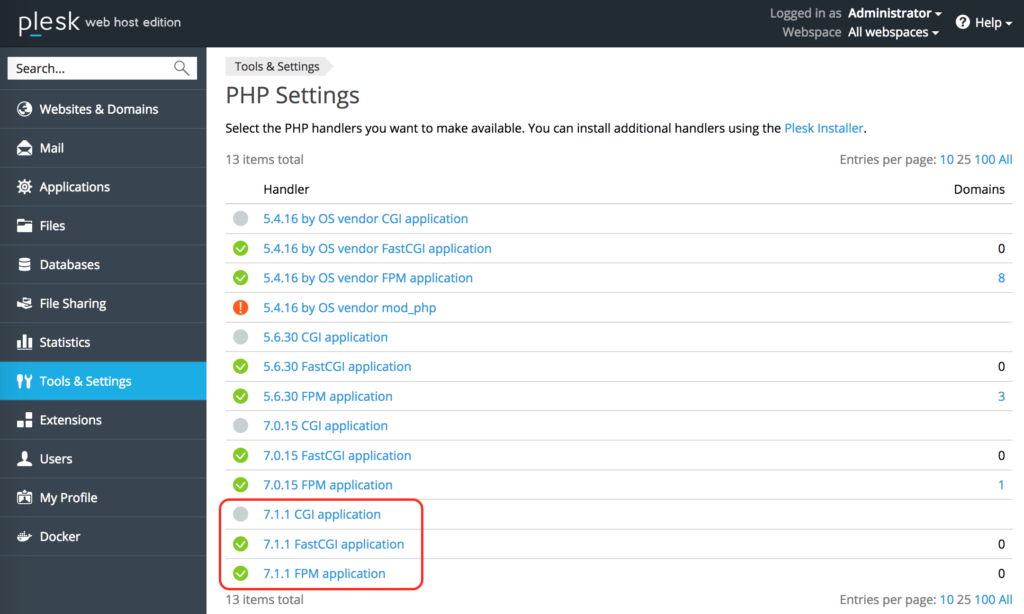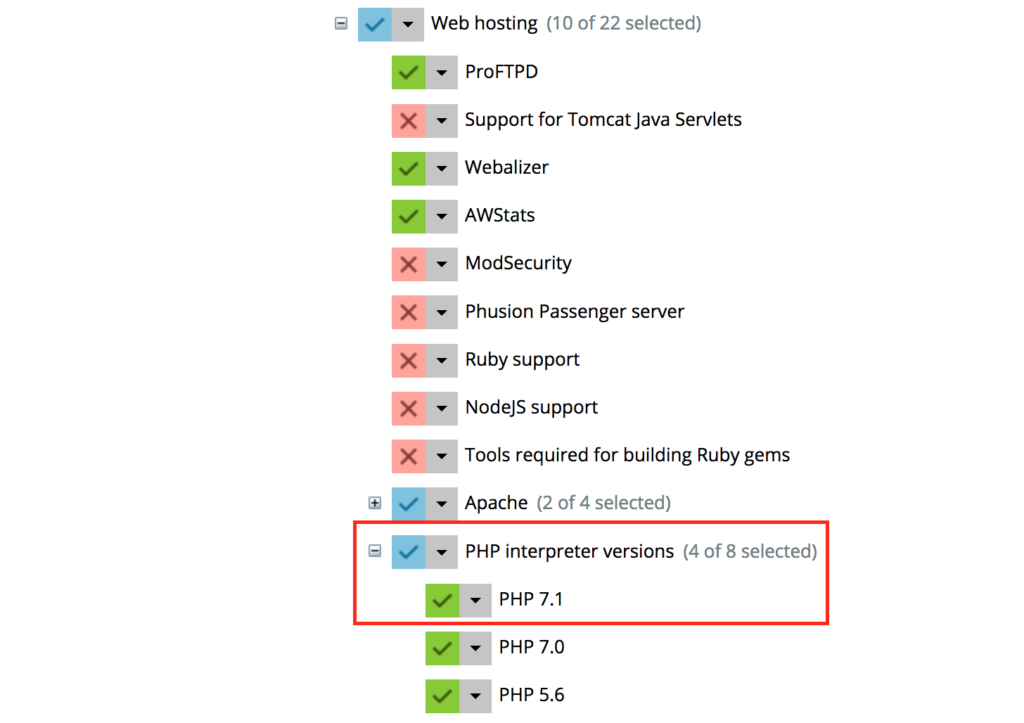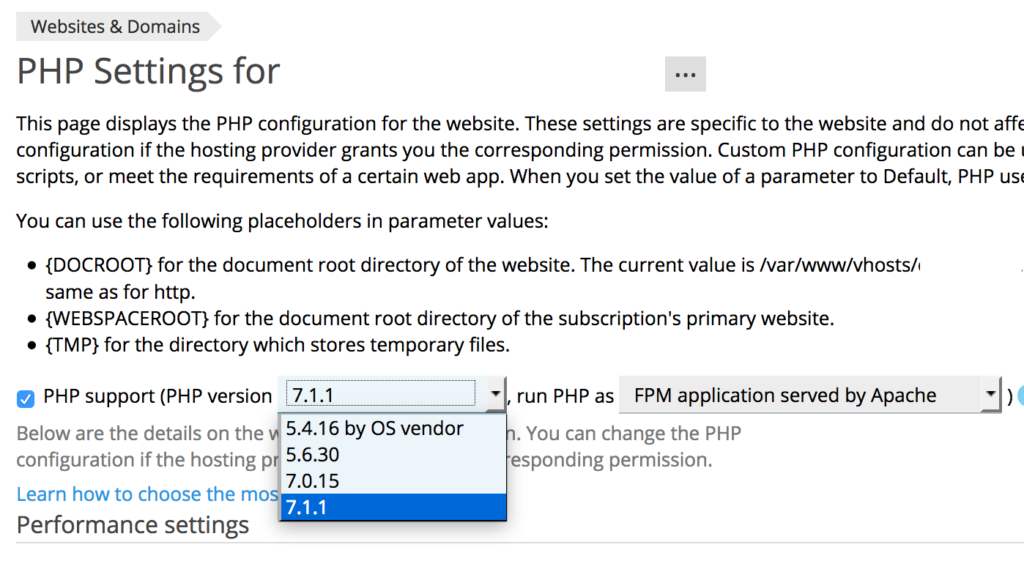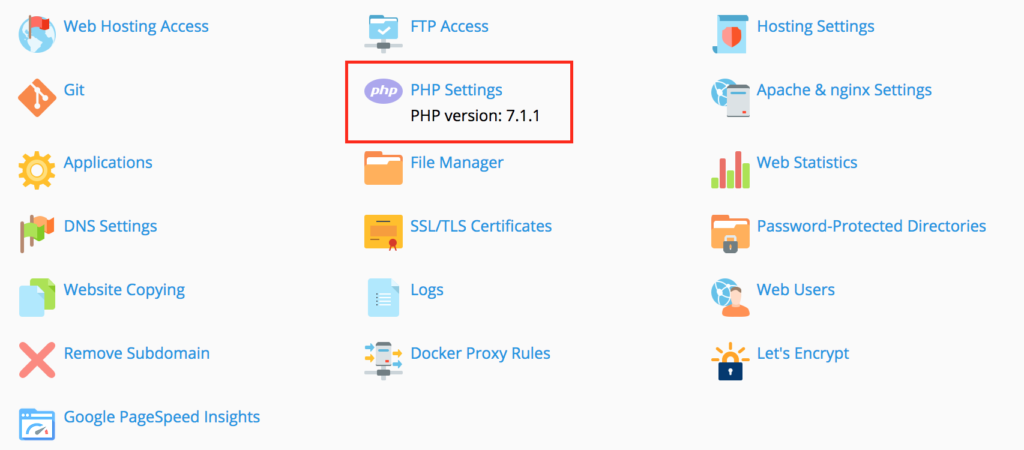We’re pleased to announce that Plesk Onyx now supports the latest PHP version 7.1.1.
The update to PHP 7.1.0 brought developers a bunch of cool new improvements such as Catching multiple exceptions types or Nullable Types. For the full list of new features, head over to the official PHP release announcement.
In version 7.1.1, more bugs were fixed to make the PHP 7.1.x branch even more stable.
Planning to update?
Check your CMS version before updating Plesk PHP to 7.1!
Because there are several incompatibilities with the last version of PHP. If you’re working with the three most used Open Source CMSs, the compatible versions are:
- WordPress >= 4.7
- Joomla! >= 3.6.4
- Drupal >= 8.2.3
Plugins and modules are not all operational on PHP 7.1.0 so if you’re planning to migrate from 7.0 (or an earlier version) to 7.1, proceed with caution. You might want to try making a copy of your sites to try out PHP version 7.1 before taking it live if all goes well.
TIP: If you are using the WP Toolkit on Plesk Onyx, you will be able to easily duplicate your website and test the new version on the copy first in the next major version of the toolkit!
Check your version of PHP
On your Plesk control panel, go to Tools & Settings – PHP Settings.

Install PHP 7.1 in Plesk
Go to Tools & Settings – Updates and Upgrades – Add / Remove components. Select PHP 7.1 and click on the “Continue” button.

After the installation process, you must activate the new version for your domains. Go to Websites & Domains, select your domain and click on the PHP Settings icon. On the next page, you’ll define the PHP version and other parameters, such as the memory limit or the execution time.

Select the new version, set your preferred performance and common settings, and click “Save. If you’ve successfully updated your Plesk PHP version, you’ll see 7.1.1 under the PHP Settings icon.

Note: As mentioned above, not all applications or plugins support the latest PHP version. If an application or plugin is vital to your website, be prepared to switch back to the last PHP version.
Now go forth and try the newest version of PHP, and enjoy the improved performance and decreased memory usage!
15 Comments
But what’s with the sw-collectd bug? It can’t test the configure files on Debian 8.7
Hi Niklas,
please use the forum (https://talk.plesk.com/) or contact the support team (https://plesk.com/support/) directly if you have an issue or found a bug.
Thanks!
Hello,
ionCubeloader for 7.1.x is not included?
Regards,
Mike
Hello Mike, PHP versions 5.6 and 7.0 are already shipped with the ioncube-loader extension enabled. PHP 7.1 should follow in one of the next updates. I will request this feature from the engineering team!
Cool. But we need Domain alias support, many other controlpanels already support this feature 🙁
Domain alias support at LetsEncrypt of course.
Hi Peter,
your topic is not related to this article! See here for a discussion about domain aliases in the Let’s Encrypt extension: https://github.com/plesk/letsencrypt-plesk/issues/28
Please add your comments there! Thanks.
Hi Plesk,
Which type of account subscription will have the PHP versions to change?
Hello,
is php 7.1 supported on plesk 12.5 or not? I cannot find this info on plesk website.
me too,
help plz…
Hello,
is php 7.1 supported on plesk 12.5 or not? I cannot find this info on plesk website
No, you need to update to Plesk Onyx to get all latest PHP versions directly from Plesk. Of course, you could also install these version manually using the command line.
Hi i try to upgrade to 7.0 php version but the second input is locked on Application CGI and the website turned off when i save the changes. How can i get the same as yours : FPM application served by Apache ?
Hi
plesk installer link is not responding. I am always getting timeout error
Hello Victor,
I use Rocky Linux, and on it, I can not install 7.1 in my upgrade and add components.
He is not defeated there. Is there any other way to do this?
I have a project which is only possible with this PHP version.
Hello Artur,
We kindly suggest you have a look at the following FAQ article. In case it still doesn’t work for you, it’s best to submit a request with our support team, as they can have a look at your specific case. Hope this helps.